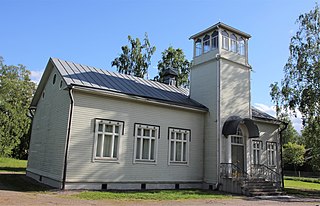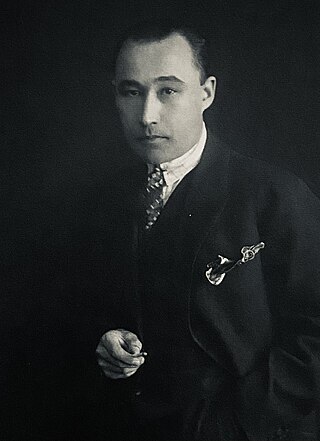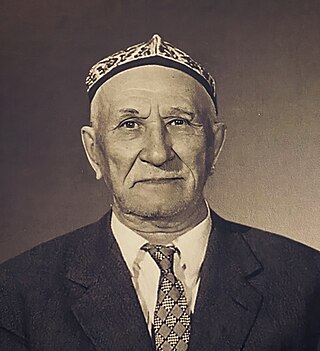
Islam is a major religious minority in the Russian Federation, which has the largest Muslim population in Europe. According to the US Department of State in 2017, Muslims in Russia numbered 14 million or roughly 10% of the total population. One of the Grand Muftis of Russia, sheikh Rawil Gaynetdin, estimated the Muslim population of Russia at 25 million in 2018.

Turkish people or Turks are the largest Turkic people who speak various dialects of the Turkish language and form a majority in Turkey and Northern Cyprus. In addition, centuries-old ethnic Turkish communities still live across other former territories of the Ottoman Empire. Article 66 of the Turkish Constitution defines a Turk as anyone who is a citizen of Turkey. While the legal use of the term Turkish as it pertains to a citizen of Turkey is different from the term's ethnic definition, the majority of the Turkish population are of Turkish ethnicity. The vast majority of Turks are Muslims and follow the Sunni and Alevi faith.

Muhacir are the estimated millions of Ottoman Muslim citizens, and their descendants born after the onset of the dissolution of the Ottoman Empire, mostly Turks but also Albanians, Bosniaks, Greek Muslims, Circassians, Crimean Tatars, Pomaks, Serb Muslims, Georgian Muslims, and Muslim Roma who emigrated to East Thrace and Anatolia from the late 18th century until the end of the 20th century, mainly to escape ongoing persecution in their homelands. Up to a third of modern-day population in Turkey may have ancestry from these Turkish and other Muslim migrants.

Estonia has one of the smallest Muslim communities in Europe. According to the census of 2011, the number of people who profess Islam was 1,508 in Estonia, or 0.14% of the total population. The number of practicing Muslims is small and, in the absence of a mosque, the Estonian Islamic Center serves as a center of worship.

Islam in Denmark, being the country's largest minority religion, plays a role in shaping its social and religious landscape. According to a 2020 analysis by Danish researcher Brian Arly Jacobsen, an estimated 256,000 people in Denmark — 4.4% of the population — were Muslim in January, 2020. The figure has been increasing for the last several decades due to multiple immigration waves involving economic migrants and asylum seekers. In 1980, an estimated 30,000 Muslims lived in Denmark, amounting to 0.6% of the population.

The Finnish Tatars, locally known as Finlandiyä tatarları, are a Tatar ethnic group and minority in Finland whose community has approximately 600–700 members. The community was formed between the late 1800s and the early 1900s, when Mishar Tatar merchants emigrated from the Nizhny Novgorod Governorate of the Russian Empire, and eventually settled in Finland. Tatars have the main building of their congregation in Helsinki. They have also founded cultural associations in different cities. They are the first Islamic community in Finland.

A continuous presence of Islam in Poland began in the 14th century. From this time it was primarily associated with the Lipka Tatars, many of whom settled in the Polish–Lithuanian Commonwealth while continuing their traditions and religious beliefs. The first significant non-Tatar groups of Muslims arrived in Poland in the 1970s, though they are a very small minority.

Islam is the second largest religion in Norway after Christianity. As of 2023, the number of Muslims living in Norway was 182,607. The majority of Muslims in Norway are Sunni, with a significant Shia minority. 55 percent of Muslims in the country live in Oslo and Viken. The vast majority of Muslims have an immigrant background, and very few Norwegians are Muslim.

Immigration to Turkey is the process by which people migrate to Turkey to reside in the country. Many, but not all, become Turkish citizens. After the dissolution of the Ottoman Empire and following Turkish War of Independence, an exodus by the large portion of Turkish (Turkic) and Muslim peoples from the Balkans, Caucasus, Crimea, and Greece took refuge in present-day Turkey and moulded the country's fundamental features. Trends of immigration towards Turkey continue to this day, although the motives are more varied and are usually in line with the patterns of global immigration movements. Turkey's migrant crisis is a following period since the 2010s, characterized by high numbers of people arriving and settling in Turkey.
Somalis in Finland are residents and citizens of Finland of Somali ancestry. As of 2023, 25,654 Finns had a Somali-background, making it the fourth most common foreign country of origin and the largest from Africa.

Finland is a predominantly Christian nation where 65.2% of the Finnish population of 5.6 million are members of the Evangelical Lutheran Church of Finland (Protestant), 32.0% are unaffiliated, 1.1% are Orthodox Christians, 0.9% are other Christians and 0.8% follow other religions like Islam, Hinduism, Buddhism, Judaism, folk religion etc. These statistics do not include, for example, asylum seekers who have not been granted a permanent residence permit.

Immigration to Finland is the process by which people migrate to Finland to reside in the country. Some, but not all, become Finnish citizens. Immigration has been a major source of population growth and cultural change throughout much of the history of Finland. The economic, social, and political aspects of immigration have caused controversy regarding ethnicity, economic benefits, jobs for non-immigrants, settlement patterns, impact on upward social mobility, crime, and voting behaviour.

The main religions that exist or historically existed in Kurdistan are as follows: Sunni Islam, Shia Islam, Christianity, Zoroastrianism, Yarsanism, Yazidism, Alevism and Judaism. Overall today, Sunni Islam is the most adhered to religion in Kurdistan.

Järvenpää Mosque is a mosque located in the Finnish town of Järvenpää. It is owned by The Finnish-Islamic Congregation, which members are Finnish Tatars. It was built in the 1940s. The Tatar community together raised the money for it.

Kurds in Finland refers to Kurds living in Finland. In 2022 there were 16,603 Kurdish speakers in Finland.
Iraqis in Finland are people with Iraqi background residing in Finland. As of 31 December 2022, they numbered 28,022, making them the third largest immigrant group in Finland behind Russians and Estonians.
Islamophobia in Poland is the fear, hatred of, or prejudice against the Islamic religion or Muslims in Poland. Since the Muslim community in Poland is small the situation has been described as "Islamophobia without Muslims". According to Monika Bobako, Islamophobia is one of the main elements of the Polish nationalist discourse. Islamophobia in Poland takes the form of racism and xenophobia towards Muslims or those perceived as Muslim.

Gibadulla Murtasin was a teacher among the Tatar community of Tampere and Helsinki, Finland. He also contributed to their cultural life by for example organizing theater plays. Murtasin was born in Turkestan.

Weli-Ahmed Hakim was a Tatar founding member and a long-time imam of The Finnish-Islamic Congregation. Hakim also operated as imam in Tampere. Hakim was a key figure in organizing religious gatherings before a Tatar congregation was established. Hakim is also mentioned as a major contributor in helping Islamic theologians and Idel-Ural State refugees in Finland, as well as taking a part in the forming of Tatar community in Narva, Estonia.

The Finnish-Islamic Congregation is an Islamic congregation which members are local Tatars. It was founded in 1925 and was the first Islamic congregation in Finland. The congregation has activity in Helsinki, Järvenpää, Kotka and Turku.

















